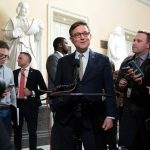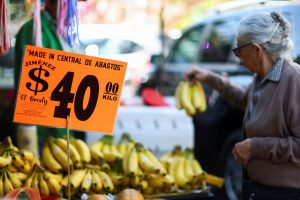“It is important to start thinking about what is the ceiling that is compatible with this idea that we have a sufficiently restrictive level to reach the objective and because that is going to define the pace. And if we establish a ceiling, I insist on these magnitudes that already I mentioned, well then, now the decision we have to make is how we want to get to that point,” he said in an interview with Reuters on Tuesday.
“Once we reach a terminal rate, the discussion would have to be how long we stay there and that, since we would have to see how the inflation already observed evolves during 2023 (…) We have predicted that 2023 will begin to reduce , which is going to close closer to the objective, but still far from it, and that towards 2024,” he said.
Banxico has raised its rate by 525 points since it began a cycle of increases in June 2021 to take it to a maximum of 9.25% and has warned that it will continue to adjust it but that the magnitude will depend on the prevailing circumstances, while general inflation was of 8.53% in the first fortnight of October and the underlying of 8.39%.
And in its latest monetary policy decision at the end of September, the bank reported that it raised its expectations for headline inflation to 8.6% from 8.1% previously and for core inflation to 8.2% from 7.6% previously, well above the permanent target of 3%. For months, the indicator has been at maximum levels of two decades.
Esquivel believes that central banks should focus on the real rate to take it as a reference to establish the nominal key. “What really affects the economy is the real part.”
close the cycle
The deputy governor, one of the five members of the bank’s Governing Board, said that while it is true that the entity must comply with its mandate to control inflation, this cannot be done at any cost because it could lead to a slowdown in the economy. who sees as fragile and vulnerable. “We don’t want to break an excessively high cost.”
“It must be done with a degree of moderation. And that is why I have warned many times that what we should not do is take the monetary stance to an excessively restrictive situation,” added the official who spoke in a personal capacity.
The bank projects an economic expansion for 2023 of between 0.8-2.4% and 1.7%-2.7% for this year.
Asked about what he has described as a decoupling of the central bank (Banxico) from the decisions of the United States Federal Reserve, the official said that although it is true that months ago the two had sought to have restrictive positions and to do so at the same pace had sense, the conditions in each country are different.
“But once we are starting or, as I think, we should start thinking about closing that cycle, then the considerations become other (…) We started much earlier, that in effect we started, let’s remember, in June 2021, the Fed cycle didn’t just start this year,” he said.
“We are already in a restrictive zone that the Fed is clearly not in,” he said. “If the Fed has to continue raising its rates more because it started late, because it has demand pressure that we don’t, for whatever reason, then we don’t have to go along with it,” the official added.
Esquivel is considered one of the more “dovish” members of the Board, having proposed softer rate hikes in the past. Nominated by President Andrés Manuel López Obrador in 2019 to complete the management of another deputy governor who retired, his mandate ends at the end of this year but could continue for eight more years if the president re-nominates him and receives the approval of legislators. .
A vast majority in the market expects the Fed to raise its benchmark rate by three-quarters of a percentage point for the fourth time in a row at its November 1-2 policy meeting to quell the highest inflation in 40 years.
The aggressive policy of monetary tightening has taken the rate from the level close to zero -seen until March of this year- to the current range of 3.00%-3.25%, but there are those who are warning that they cannot be followed with increases of 75 base points because it could put the economy into a recession.













